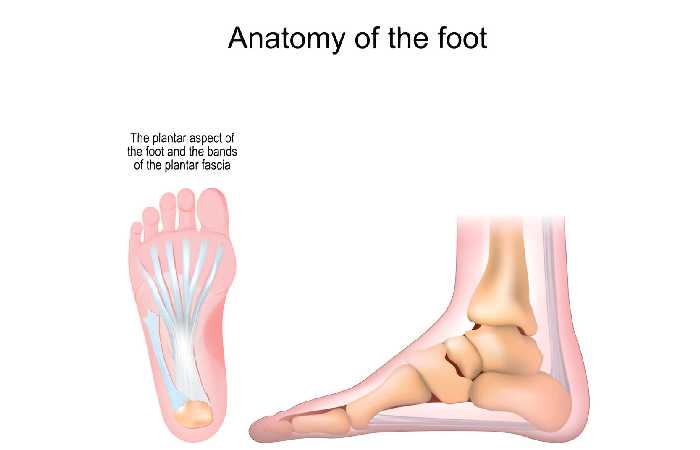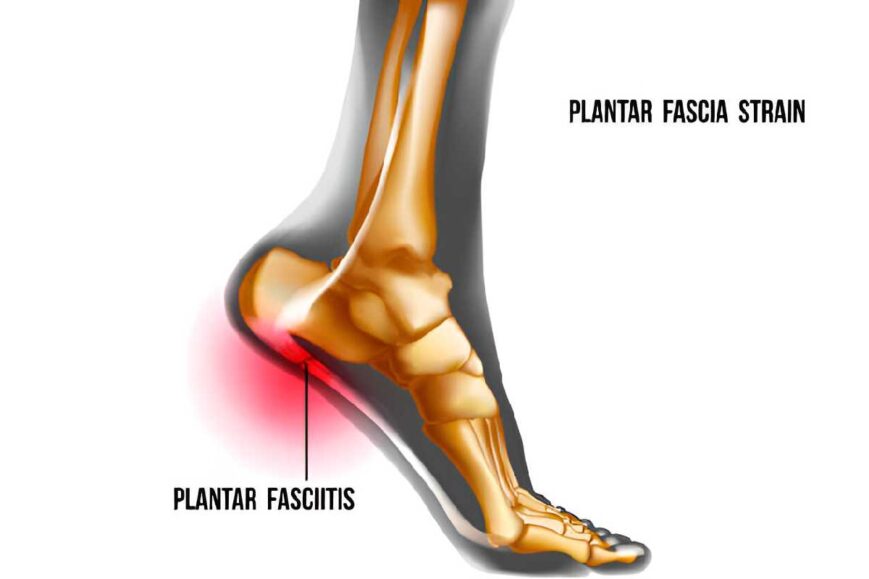Plantar Fasciitis Surgery – When frequent pain in your heel makes it hard to stand, walk, or exercise, it is time to consult your doctor, and you may also need a plantar fasciitis surgery. Let’s talk about plantar fasciitis surgery briefly.
Plantar fasciitis surgery

The plantar fascia remains the thick ligament that goes from your toes to your heels and supports your foot’s arch. The reason for plantar fasciitis is the irritation and inflammation in this ligament. It’s one of the principal reasons for heel discomfort.
Plantar fasciotomy is a surgery to separate the fascia from the heel bone and relieve tension. During the healing process, the connective tissue undergoes new growth, promoting lengthening of the fascia.
What is the reason to perform plantar fasciitis surgery?
Surgery is not the primary treatment. Most people with plantar fasciitis never need it. But when you’ve tried other solutions and still have heel pain, surgery is the only choice.
Before going for surgery, your doctor may suggest less offensive treatments, like:
- Physical therapy, including stretching and strengthening exercises
- Anti-inflammatory medications
- Extracorporeal shock wave therapy that uses high-energy impulses to repair plantar fascia tissue
- Orthotic arch supports
- Splints
- Taping your foot
- Icing
- Massage
- Cortisone, local anesthetic, or platelet-rich plasma injections
According to the studies, about 90 percent of people respond to conservative treatment in 12 months.
Despite these treatments, if you are suffering from this chronic pain, it might not be easy to stand, walk, or play sports. Over an extended period, plantar fasciitis can change how you move and walk, leading to other problems with your feet, legs, hips, and back. The surgery aims to reduce pain and improve foot mobility so you can return to normal activities. Overall, surgery is the only successful release of the plantar fascia.
A good candidate for plantar fasciitis surgery
You are a good candidate for surgery if:
- If you continue having severe pain despite trying other measures.
- Your symptoms have lasted more than six months.
- If You’re unable to join in physical activities.
- Your heel pain disturbs your ability to work.
- Other potential diagnoses have been ruled out.
- Suppose you are suffering from certain health conditions such as diabetes, peripheral neuropathy, or venous insufficiency. In that case, the risk of side effects like complications of plantar fasciitis or slow healing may be higher.
What’s the procedure of plantar fasciitis surgery?
Plantar fasciotomy can be done in two ways:
Open surgery. It regularly takes place in a hospital situation.
Endoscopic surgery. This process can be completed at the surgical center, hospital, or doctor’s clinic.
You’ll be provided with pre-op directions. You may be directed to stop eating and drinking 6 to 8 hours before surgery. The doctors will instruct you about whether you should take regular medicines that morning.
Your foot will remain inspected, and your crucial signs will be checked before the surgical procedure. You’ll probably have an intravenous (IV) line injected into your arm for medications. Then, your foot will be cleaned with antiseptic.
Details about each type of surgery:
Open surgery: It usually requires general anesthesia or a regional block with sedation. A 1- to 2-inch incision detaches your plantar fascia from your heel bone. Any bone spurs or trapped nerves can similarly be detached at this time.
Endoscopic surgery: This can be done with a local anesthetic and a mild sedative. Endoscopic surgery involves two tiny cuts beneath your ankle bone, each one less than half an inch long. The surgeon will insert a small camera, an endoscope, and a tiny knife in one of the openings to release your plantar fascia. The incisions will be sutured and bandaged.
Plantar fasciotomy is typically an outpatient procedure. You’ll be released once you are conscious and your vital signs are good, typically within a few hours. You won’t be able to drive, so you must arrange transportation in advance.
What is the recovery time after plantar fasciitis surgery?
You’ll be specified about post-op instructions as per your medical requirements. You can experience minor pain or some discomfort in a few days. Your doctor prescribes some pain-killer medicines, or you can take over-the-counter medication as instructed.
Recovery from open surgery
- You might require a cast, walking boot, or a particular shoe for many weeks as you heal after open surgery. You may need to return to the doctor’s clinic to remove sutures or cast.
- Your doctor will tell you when you can start wearing regular shoes. You’ll have a small scar in the incision area. It takes 6 to 10 weeks to recover from this surgery.
Recovery from endoscopic surgery
- In the case of endoscopic surgery, your foot should be able to tolerate limited weight quickly. You’ll likely be able to wear regular shoes within 1 or 2 days. Scarring will be minimal.
- It is likely recommended that you relax on your foot for several months. In the meantime, your post-surgery recovery may comprise flexibility and strengthening exercises with a physiotherapist or on your own.
- The recovery time from this surgery is usually 3 to 6 weeks, and, depending on your condition, your doctor can tell you what to expect.
- As recommended for both open and endoscopic surgery, return for follow-up visits.
- The shoes you wear are essential.
- From now on, always wear footwear that provides ample support, particularly during physical activity. In the past, if you participated in intense activities or you were an athlete in the past, then you should consult your doctor before restarting these activities.
Conclusion
Plantar fasciitis is a disease that affects a ligament known as plantar fascia, which runs from the heel to the toes. A few non-invasive treatments can resolve the problem within a few months or a year. If other methods have failed and heel pain is disturbing your quality of life, you may want to consider surgery. This procedure involves releasing the ligament to relieve tension. It can be done through open surgery or endoscopic surgery.


